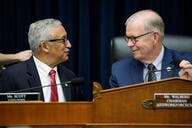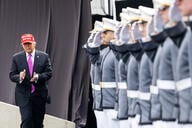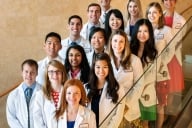You have /5 articles left.
Sign up for a free account or log in.
If any doubt remained, data released Tuesday should erase them: Medical school is back as a destination, a seeming response to the law of supply and demand.
As recently as 2002, the number of students applying to and enrolling in American medical schools appeared to be in a freefall, having dipped sharply, from highs in the mid-1990s, amid concerns about a glut of physicians. But with at least some experts now predicting a significant shortfall of doctors in the years ahead, medical schools are expanding their enrollments and students are flooding the institutions with applications to fill the seats, according to an annual look at medical school admissions by the Association of American Medical Colleges.
The number of first-year students enrolling at the nation's 126 medical schools this fall grew to a record 17,759, an increase of 2.3 percent and at least the fifth straight year in which that number ticked up. And the number of applicants grew by 8.2 percent, to 42,315, the highest total since 1997. Nearly 32,000 of those applicants were applying for the first time, a record high.
The growth in applicants and enrollments come at a time when the medical college association and some other experts are calling for significant increases in the number of American doctors, citing what they predict will be a significant shortage of well-trained medical professionals (the view that the country faces a shortage of doctors is not uniformly shared).
The AAMC has called for a 30 percent increase in medical school enrollments by 2015 through expanded enrollments at existing schools and the creation of new ones, and while association officials said this year's overall increase probably would not put them on pace to reach that goal, they said they were heartened by the fact that 11 institutions had boosted their enrollments by at least 10 percent. The College of Medicine at the Texas A&M University System's Health Science Center added 20 first-year students to its 2006 total of 85, an increase of 23.5 percent, and the Michigan State University College of Human Medicine (a 47.2 percent increase) and the University of Arizona College of Medicine (21.8 percent) both grew sharply by adding campuses -- Michigan State in Grand Rapids and Arizona in Phoenix.
And as if to underscore the point, Hofstra University announced Tuesday that it was teaming up with a major local hospital, North Shore-Long Island Jewish Health System, to create a new medical school at Hofstra. AAMC's president, Darrell G. Kirch, said that six medical schools were awaiting full accreditation and that numerous others were in various stages of planning.
"We're pleased to see our schools taking [our] advice to heart," Kirch said.
Kirch said he and other AAMC officials were gratified not just by the enrollment growth, but by the fact that it was resulting in a medical student body that is both more academically accomplished and more ethnically and racially diverse. Fewer than 45 percent of 2007 applicants to American medical schools were admitted, a figure that has declined steadily from the low 50s at the start of this decade. Enrolled students this fall had an average MCAT score of 28 and average college grade point average of 3.5, Kirch said, "credentials that are the strongest we've ever seen."
The number of enrollees from underrepresented minority groups was higher than ever before, and Kirch specifically noted a 5.3 percent increase over 2006 in the number of black male students who enrolled. Black applicants were less likely to be admitted to the medical colleges than were members of other racial groups -- they were admitted at a rate of 38.4 percent, while Asian, Hispanic and white applicants all hovered around the overall average of 44.6 percent.





